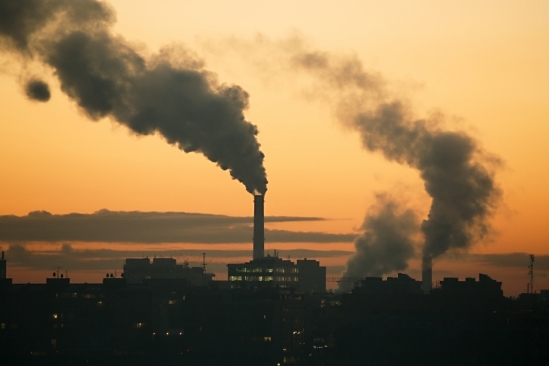Once an Emission, Always an Emission?
Researchers from UCSB and Germany Teamed Up to Explore Capturing Carbon Dioxide in Products

Five years ago, a UN panel determined that keeping global warming below 2° C after 2050 will likely require technology to remove greenhouse-gas emissions. One technique called carbon capture and storage (CCS) filters carbon dioxide from emissions, pressurizes it, and stores it underground — a process still in development. Why not create commodities from CO2 rather than just storing it? was the question under scrutiny by a team from UCSB’s Bren School of Environmental Science & Management and RWTH Aachen University in Germany (RWTH stands for Rheinisch-Westfälische Technische Hochschule). Their study, published in the Proceedings of the National Academy of Science on May 13, 2019, determined that capitalizing on greenhouse gases is definitely a novel approach, but not a feasible one.
More than 3.3 billion metric tons of emissions come from the chemical industry every year, the team’s early research determined. And those emissions, from the making of plastics, paints, lubricants, and more, are often carbon-based. The benefit of the “carbon capture and utilization” (CCU) process would be to capture and store that emitted CO2 in products again. It also created an abundance of pure water as a byproduct, but in so doing would increase energy demands. The question then became, exactly how much energy would the process consume — and it had to be renewable energy to avoid exacerbating greenhouse gas production.
“Our study represents the first global assessment of the potential that CCU holds for carbon mitigation, and we found that it takes a lot for CCU to save the world,” said Bren School Professor Sangwon Suh, who was also the coordinating lead author on the UN’s Intergovernmental Panel on Climate Change Assessment for 2014. It could require more than twice the renewable energy than the world aims to produce by 2030, according to the research team’s findings. “Some people may think that those renewable energy numbers that we tested were unrealistic. Well, that’s the point,” Suh said.
Even if powering CCU were achievable, the team discerned that the most efficient use of renewable energy is on heat pumps, followed by electric transportation and water heaters. Moving forward to their next inquisition, the scientists will be “examining the role data centers and outsourced computing could have on reducing emissions.”



